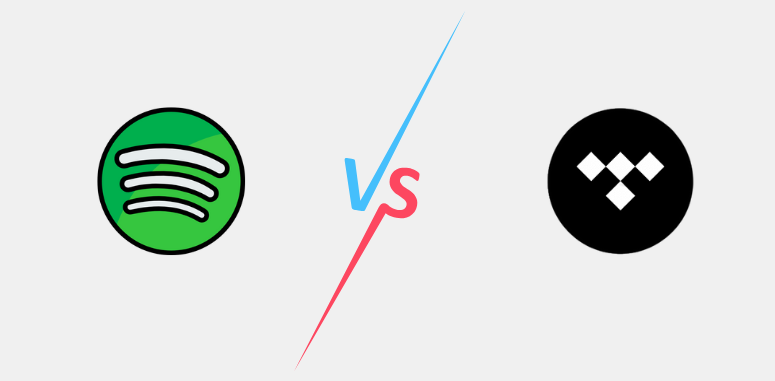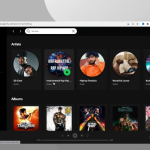Spotify is considered the largest streaming service globally, offering thousands of premium features such as Timestamp Sharing, offline listening, and a vast library of podcasts. Although Spotify holds a dominant position in the music industry, several competitors are striving to compete. One of these competitors is Tidal, which has established itself as a strong rival to Spotify. In this guide, we will conduct a detailed analysis of both platforms and determine which streaming service holds the greater potential.
Spotify vs Tidal – User Interface
The user interface is critical to consider before selecting a new streaming service. A well-designed and intuitive interface enhances navigation throughout the application, ultimately improving the listening experience. Therefore, in this section, we will briefly analyze both streaming platforms’ user interfaces (UI).
Both Spotify and Tidal offer easy-to-navigate, user-friendly interfaces. Spotify’s interface features a search bar at the top of the home screen and a sidebar containing the library and other features. The sidebar enables users to utilize any Spotify feature seamlessly within a few clicks. Conversely, Tidal’s interface features a dark black theme and an intuitive layout, with all its features integrated into the home screen.
Spotify vs Tidal – Content
Both platforms fiercely compete with one another in terms of content. Spotify has a vast library of over 100 million tracks and 5 million podcasts, whereas Tidal also offers 100 million tracks. Spotify provides a broader range of genres curated by its editorial team, and users enjoy greater privileges to access the latest hits from artists.
Tidal emphasizes exclusive content, such as albums and videos from high-profile artists like Beyoncé, Jay-Z, and Kanye West. In addition to its extensive music library, Tidal offers a range of supplementary content, including music documentaries, live concerts, and artist interviews.
Spotify vs Tidal – Music Quality
Must Quality plays a very vital role in streaming. Music Quality must be very high if you want to enjoy songs, music, or podcasts completely. So in this section, we will discuss both Spotify and Tidal regarding music quality.
Spotify Music Quality
Spotify offers these streaming qualities to its premium users.
- Automatic (depends on your internet quality)
- Low (24 kbps)
- Normal (96 kbps)
- High (160 kbps)
- Very High (320 kbps)
Tidal Music Quality
Tidal Premium comes with these streaming qualities.
- Normal (96 kbps)
- High (320 kbps)
- HiFi (1411 kbps)
- Master quality (up to 9216 kbps)
Spotify vs Tidal – Plans & Pricing
Regarding pricing, Spotify offers three plans: free, Premium, and family. The free plan allows you to listen to music with ads, while the premium plan provides ad-free listening, offline playback, and high-quality audio. The family plan allows up to six people to share an account and comes with a discounted price. The prices for Spotify Premium range from $9.99 to $14.99 per month.
Tidal offers two plans: Tidal Premium and Tidal HiFi. Tidal Premium offers standard-quality audio and costs $9.99 per month. Tidal HiFi offers CD-quality and high-resolution audio and costs $19.99 per month. Tidal also offers a family plan that allows up to six people to share an account. It costs $14.99 per month for Tidal Premium and $29.99 for Tidal HiFi.
Final Thoughts
I have compiled all the information and insights gained from my experience with these platforms in this guide. Upon reading this guide, you should have a comprehensive overview of Spotify vs Tidal, allowing you to make an informed decision on which platform better aligns with your preferences.







